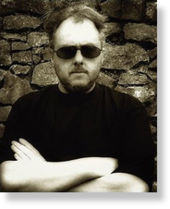
Originally published on SOTT.net on August 19, 2012.
Compared to, say, ten years ago, a lot of people today are aware of and talking about psychopaths. On the one hand this is encouraging, but on the other, it’s a little troubling. It is heartening to see awareness of psychopathy breach the mainstream frequency fence here and there, but the signal-to-noise ratio, as with all knowledge relevant to the growth and survival of decent human beings, remains high on the ‘noise’ side. We see ridiculous studies in the news portraying psychopaths as curable and articles making the rounds about how not having a Facebook account may indicate that someone is a psychopath. We’ve also seen Twitter being touted as a tool for ‘spotting psychopaths’ and, just today, news that the US justice system is considering acceptance of biological evidence that someone is a genetic psychopath in court with a view to using it to mitigate the sentences of criminal offenders. The reasoning being that psychopaths can’t help being psychopaths, that they lack free will and therefore they bear diminished responsibility for their crimes.
Well, yeah, that’s exactly why they need to be held under lock and key permanently.
Perhaps we shouldn’t be so surprised that the burgeoning awareness of psychopathy has been vectored away from the truth of the matter in this way. This is an information war after all, so if the psychopaths in positions of power gauge that the ‘psychopath awareness train’ has left the station, they would naturally be working around the clock to load it with nuclear capabilities in the hope of derailing it, or at least sending it down the wrong track. The name of their game is to misinform people about what psychopaths are really like by trivialising and obscuring the issue: hence the proliferation of junk science that claims psychopaths can be cured, that psychopathology is a harmless evolutionary adaptation, or that psychopaths can be spotted based on analyses of their Twitter feed and Facebook page (or the lack thereof).
A case in point is an author who has written a couple of books of the issue. When Irish artist Thomas Sheridan published Puzzling People: The Labyrinth of the Psychopath in 2011, we initially felt that, overall, Sheridan had done a decent job of synthesizing the available information on psychopathy, which is largely walled in by academic jargon, and putting it together for a wider audience. Four of his five core characteristics of a psychopath were sound (except for ‘high testosterone’ – there’s no correlation between psychopathy and baseline testosterone), but we had reservations about some of the ‘secondary characteristics’ he listed as markers for psychopathy, and worried that they tended towards ‘spotting the psychopath’ based on visual cues, such as being able to read the condition in someone’s eyes.
Those of you who have read Dr. Robert Hare’s Without Conscience will remember that the best psychotherapists are fooled from time to time, even when they practically have a clipboard in front of them with a patient’s history that is stamped ‘Probable Psychopath’! Yet here was, Thomas Sheridan – a new author on psychopathology – stating with absolute certainty, in a book that provided no citations, that “when one becomes skilled in recognising these traits and pathologies, psychopath-spotting becomes relatively straight-forward.” [p.10]
Really? That certainly hasn’t been our experience. Sheridan also claimed in Puzzling People that “all psychopaths get it in the end.” [p.108] Not only is this not true, it must run counter to reality given that the vast majority of people are totally unaware of their existence – at least, they are limited to an awareness of psychopaths as mass-murdering sadists, whose numbers are tiny relative to the psychopathic population as a whole. Our research actually puts their number at around 6% of the global population (and that may even be conservative), so the overwhelming majority of the planet’s 420,000,000 psychopaths live from cradle to grave undetected, leaving a swathe of emotional, social and financial destruction in their paths. And this is to say nothing of the massive destruction wrought by the actions of psychopaths in positions of power in governments and corporations who almost invariable get away with mass murder.
Much of Sheridan’s Puzzling People read like it would not have been out of place on the Cassiopaea forum, so despite our reservations about some of Sheridan’s claims, we nevertheless endorsed his book and encouraged SOTT readers, family members and friends to pick up a copy. From correspondence with the author, we learned that he had been a big fan of our work for several years. He has also been a member of our forum since 2009, when he introduced himself as “Transsociopathica, Demonic Sociopath Entity Destroyer”.
Where Puzzling People was a compilation of the research and insights of others, Sheridan’s second book, Defeated Demons, Freedom from Consciousness Parasites in Psychopathic Society, is enriched with his own ‘original’ material. The long and short of it is that Defeated Demons is ‘not even wrong’.
In a section called ‘The Self-Raised Predator’ (p.24), Sheridan proclaims that the fact that psychopaths are born into this world is “propaganda by the pathologically-driven, genetics-obsessed elitist faction that psychopathy is ‘all in the genes’… a myth peddled by prescription-happy psychiatrists… and creating enormous anxiety among ordinary people.” Raising the issue of psychopaths in power abusing research into genetic psychopathy is one thing; throwing the baby out with the bathwater by stating that there is no genetic component to psychopathy is something else altogether. Whether or not Sheridan realised it, by doing so he discarded the core problem of psychopathy altogether. By definition, psychopaths are born, not made. According to all of the psychiatrists and psychologists that have spent years researching the topic, and psychopaths themselves, psychopathy is not an acquired mental illness that can be fixed.
If there’s no genetic component to the psychopathic spectrum and they’re not born, then where does Sheridan think they come from? His answer is as surprising as it is ignorant:
“On the other hand, there is plenty of research which shows the reverse to be true: that psychopaths just seemingly arrive out of nowhere as a kind of predatory savant in amongst a family of perfectly compassionate and normal individuals… We make the brain we need in life.” (Defeated Demons, p.45-47).
“Just seemingly arrive out of nowhere”!? Is that meant to be a serious argument? Psychopaths “just appear”? Kind of like the ‘big bang’ or ‘God’ maybe? Sheridan rightfully decries the corruption of science and the exclusion of consciousness from the study of cognitive science, but in attempting to fill in the gaps he makes fatal errors by applying neuroplasticity and the developmental potential of normal people to the case of psychopaths.
Psychopaths are hardwired to embody that “predatory savant”, meaning that their predatory consciousness fits their genetic blueprint. Neuroplasticity does not apply to psychopaths. The psychopathic brain is the result of evolutionary adaptations in the genetics of psychopaths; an individual psychopath him/herself does not “make the brain it needs” through “specific choices and adaptations”, as Sheridan puts it.
Beware of anyone stating with absolute certainty that psychopaths can be ‘spotted’. Pathological symptoms and behaviours can be seen and called out for what they are, but they may yet be the learned strategies of a normal person who has been induced into believing that it is the only way to survive growing up in a pathological world.
We cannot emphasise enough that some of the most pathological people we have come across have the most normal mask of sanity you can conceive of. They don’t physically hurt anybody, they don’t look at you funny, they barely even raise their voice in anger. Some of them even excel in particular fields and are, to all appearances, well-adjusted upstanding citizens. What most often catches them out in the end is an otherwise mundane incident that blows up into a big drama as a result of their wholly inappropriate reaction. They simply can’t maintain their mask for an indefinite amount of time. But even then, when pathology is staring you in the face, it is oh, so easy to make excuses for them and ‘fill in the blanks’. In short, sure-fire diagnoses are risky, and it takes careful networking with others and combined recapitulation of YEARS of observation to come up with any tentative diagnosis and a suitable course of action for protecting the self and others from any apparent psychopath.
To say Sheridan’s books are loose with the facts (the second one in particular) would be an understatement. With hardly any references to sources cited, Defeated Demons consists of subjective statements, made one after the other and offered with little or no basis in fact. They are, therefore, often totally unhinged from reality and, as a result, of little use to anyone sincerely interested in understanding what psychopaths are and how they manipulate. In fact, such subjective and ill-informed pronouncements are a danger to anyone attempting to understand this most important of topics. Wrong data is worse than no data at all.
Like the abovementioned nonsense about using social media platforms as tools for singling out psychopaths, Sheridan’s criteria for spotting psychopaths are often superficial and glib, including his assertion that psychopaths can be spotted by their eccentric music collections:
“A genuine psychopath will have the most bizarre music collections. Everything from Doris Day to death metal, there will be no consistency based on actual emotion or style. To the psychopath, it music [sic] merely serves as potential props to manipulate others; bespoke tastes for their bespoke personas.” (Defeated Demons, p.96)
Sheridan has also claimed that psychopaths can be identified by “a ring finger being longer than an index finger, a receding hair line, heavy growth of facial and body hair, acne, and high cheekbones with a low brow ridge.” This is precisely the kind of deluded racist, eugenicist approach taken by the Nazis and the modern-day ruling elite. Strangely enough, as noted above, in his second book Sheridan rails against the idea that it is ‘all in the genes’ as “propaganda by the pathologically-driven, genetics-obsessed elitist faction”.
In May this year, a thread was opened on our forum by members discussing Sheridan’s odd stance against genetic psychopathy described in Defeated Demons as well as the vehemence against the UFO phenomenon and channeling that he was beginning to voice on radio interviews and posts to his Facebook page, where he described himself as a “punk rock psychologist”. Above all, it was the absolute certainty in Sheridan’s writings that raised eyebrows.
Sheridan’s vitriolic stance against channelling as the ‘work of the devil’ is particularly interesting. There are numerous instances in the history of science where the great minds we eulogise today made discoveries via ‘unorthodox’ inspiration. Think of the discovery of the benzene ring. You won’t see this mentioned on Wikipedia, but Friedreick Kekule chanced upon this important discovery thanks to the serendipitous intervention of a dream. The extraordinary Hindu Ramanujan, one of the world’s greatest mathematicians, lived at the turn of the 20th Century. He was entirely self-taught and produced an enormous amount of work that has inspired a vast amount of further research and is still being plumbed for its secrets today, before dying at the tender age of 32. Ramanujan claimed that he received his ideas through dreams in which complex equations were ‘channelled to him by a goddess’.
Ramanujan credited his acumen to his family Goddess, Namagiri of Namakkal. He looked to her for inspiration in his work, and claimed to dream of blood drops that symbolised her male consort, Narasimha, after which he would receive visions of scrolls of complex mathematical content unfolding before his eyes. He often said, “An equation for me has no meaning, unless it represents a thought of God.”
The Man Who Knew Infinity: A Life Of The Genius Ramanujan ~Robert Kanigel, 1991
In the 1930s, E. T. Bell would remark that Ramanujan had broken the rules by which mathematicians evaluate their own. “When a truly great [algorist, or formalist] like the Hindu Ramanujan arrives unexpectedly out of nowhere, even expert analysts hail him as a gift from heaven,” he wrote, crediting him with “all but supernatural insight” into the hidden connections between seemingly unrelated formulas.
Supernatural insight.
A gift from heaven.It is uncanny how often otherwise dogged rationalists have, over the years, turned to the language of the shaman and the priest to convey something of Ramanujan’s gifts. Hardy was the first Western mathematician to thoroughly examine Ramanujan’s notebooks, but over the next seventy-five years many others would, too. And repeatedly they have been reduced to inchoate expressions of wonder and awe in the face of his powers, have stumbled about, groping for words, in trying to convey the mystery of Ramanujan.
“We have no idea how he did the marvelous things he did, what led him to them, or anything else,” says mathematician Richard Askey, a Ramanujan scholar at the University of Wisconsin in Madison. Says Bruce Berndt, after years of working through Ramanujan’s notebooks: “I still don’t understand it all. I may be able to prove it, but I don’t know where it comes from and where it fits into the rest of mathematics.” He adds another point: “The enigma of Ramanujan’s creative process is still covered by a curtain that has barely been drawn.”
[…]
T. K. Rajagopolan, a former accountant general of Madras, would tell of Ramanujan’s insistence that after seeing the drops of blood that, according to tradition, heralded the presence of the god Narasimha, the male consort of the goddess Namagiri, “scrolls containing the most complicated mathematics used to unfold before his eyes.” (pp. 280-281)
Sheridan’s particular beef with channeled material is reminiscent of Stewart Swerdlow’s assertion that “Any channeled information is crap. It is 100% disinformation.” Swerdlow is a self-styled “metaphysical world leader” who claims to have spent 13 years as part of the the Montauk Project, a series of US military mind control experiments (think The Men Who Stare At Goats). Arkadiusz Jadczyk responded to Swerdlow’s ignorant stance here. It’s well worth reading as much of it is applicable to our current analysis of Thomas Sheridan and his work.
Apparently incensed at what our network of readers was piecing together about Sheridan’s contradictory beliefs, questionable past behaviour and lewd suggestions on his Facebook page, Sheridan brought out the tired old cult accusation against SOTT.net and launched into a three-day expletive-laden rant against us through his Facebook page.
Here are a few examples:




This last image is rather funny in that Sheridan tries to promote himself a living in the ‘ghetto’ (the North side of Dublin, Ireland) and having ‘survived car bombs’. He unfortunately misspells the acronym UVF as ‘UFV’. Here he is referring to a car bomb in Dublin in 1974 by the pro-British ‘Ulster Volunteer Force’ (UVF) that killed 26 people, but apparently not Thomas Sheridan, because, as an 8 year old boy at the time, he was probably sitting in his house miles away. This is a typical trait of the psychopath where they will place themselves at the center of dramatic events in order to impress people and thereby more easily manipulate them. We will allow for the fact, however, that Sheridan may have “lived on the streets of New York”, although it was most likely to have been in a cardboard box and not in a Wall Street bank, as he likes to claim.
As an aside, this is the common modus operandi of people who have spontaneously decided to attack our work, so it’s nothing new for us and we don’t generally pass comment on it publicly. We have covered this ground time and time again, so if you are unaware of the background to cult accusations made against us and would like to get up to speed, you can visit Cassiopaea-cult.com, where you’ll find detailed chronological accounts, documentation and testimonies.
It’s interesting that Sheridan has had a number of blogs and websites in the past, only one of which appears to remain live. One of his main web sites was apparently removed in the past few days. Sheridan also set up his own forum, ‘Psychopath Free’, ostensibly as a venue for helping victims of psychopaths. He also appears to have removed his Facebook page, but not before bragging about having a separate fake Facebook profile under the pseudonym of Fontaine Excelsior DeBlanchard III. Rife with sexual innuendo and sexist slurs, Sheridan apparently held court there until summer 2011 for a harem of female worshippers. Meanwhile he appears to have used his ‘real’ Facebook page to attract victims of psychopaths, again predominantly female.
“I am going to reach millions of people with my work… The whole world is waiting for me.”
We had been hoping against hope that Sheridan would come around and really grok psychopathology, but his recent behaviour coupled with information sent to us anonymously about his checkered past has left us with little choice but to share our findings with the public. We wonder how, if Sheridan were to use his own criteria for ‘spotting a psychopath’, he might diagnose someone writing this kind of trash on public forums:

See this link for the full extent of Sheridan’s pathology.
And here’s the ‘Counsellor of victims to Psychopaths’ (a majority of whom are women) holding forth on women:

See this link for the full original post by Sheridan.

See this link for the full original post by Sheridan.
There are many more such posts, the details of which you can find on our forum here. Or at the following Usenet groups links (Sheridan is either ‘Thomas’ or ‘Unki’ with kfuzzbox@tinet.ie as his email address):
Such foul-mouthed rants certainly conflict with the image Sheridan projects as a counselor to victims of psychopaths who goes around giving talks on ‘Alchemy, Mythology, Consciousness and Symbols’, how to ‘Transcend Toxic People’ and ‘Tarot Psyche Workshop: A Roadmap to the Consciousness’. In fact, we are reminded of the account written by Hervey Cleckley about the psychiatrist who periodically needed to defile himself in order to be able to maintain his mask of sanity at other times.

Within the past day or two, Sheridan has realised that members of our forum had found his Usenet groups postings and is now claiming that all of the filth he wrote there was ‘satire’ or ‘material for his stand up comedy routine’. Strangely enough, this is precisely the kind of thing that pathological people will calmly do when they’re caught red handed – lie profusely. Sheridan is also claiming that his Usenet groups postings are being quoted “out of context” on the Cass forum. This is not true, as anyone can clearly see for themselves by following the links. The thing that concerns us most here (because honestly, Sheridan is a nobody, by his own admission) is that Sheridan has attracted many female followers. Given all that we have discovered, we have little doubt that there are many women out there who have been victimized, in one way or another, by Thomas Sheridan the ‘punk rock psychologist’. To be quite frank, based on our extensive experience dealing with such types (and the experience of many of our forum members) it’s likely that Sheridan is attempting to set himself up as an expert on psychopathy for the same reason pedophiles become school teachers and Boy Scout Troop leaders … in an effort to get close to potential victims. His harem of fawning females on his “Psychopath Free” forum suggest that he has achieved some success in this effort already. These women need to know how he has treated women in the past, and the true face of Thomas Sheridan.
Consider now some of the traits of a psychopath drawn up by Dr. Robert Hare, who really is an expert on psychopathy. Hare devised the PCL-R 20 checklist, which is based on Hervey Cleckley’s 16-item checklist, and ask yourself does any of it fit with the known behavior of Thomas Sheridan.
- GLIB and SUPERFICIAL CHARM — the tendency to be smooth, engaging, charming, slick, and verbally facile. Psychopathic charm is not in the least shy, self-conscious, or afraid to say anything. A psychopath never gets tongue-tied. They have freed themselves from the social conventions about taking turns in talking, for example.
- GRANDIOSE SELF-WORTH — a grossly inflated view of one’s abilities and self-worth, self-assured, opinionated, cocky, a braggart. Psychopaths are arrogant people who believe they are superior human beings.
- NEED FOR STIMULATION or PRONENESS TO BOREDOM — an excessive need for novel, thrilling, and exciting stimulation; taking chances and doing things that are risky. Psychopaths often have a low self- discipline in carrying tasks through to completion because they get bored easily. They fail to work at the same job for any length of time, for example, or to finish tasks that they consider dull or routine.
- PATHOLOGICAL LYING — can be moderate or high; in moderate form, they will be shrewd, crafty, cunning, sly, and clever; in extreme form, they will be deceptive, deceitful, underhanded, unscrupulous, manipulative, and dishonest.
- CONNING AND MANIPULATIVENESS- the use of deceit and deception to cheat, con, or defraud others for personal gain; distinguished from Item #4 in the degree to which exploitation and callous ruthlessness is present, as reflected in a lack of concern for the feelings and suffering of one’s victims.
- LACK OF REMORSE OR GUILT — a lack of feelings or concern for the losses, pain, and suffering of victims; a tendency to be unconcerned, dispassionate, coldhearted, and unempathic. This item is usually demonstrated by a disdain for one’s victims.
- SHALLOW AFFECT — emotional poverty or a limited range or depth of feelings; interpersonal coldness in spite of signs of open gregariousness.
- CALLOUSNESS and LACK OF EMPATHY — a lack of feelings toward people in general; cold, contemptuous, inconsiderate, and tactless.
- PARASITIC LIFESTYLE — an intentional, manipulative, selfish, and exploitative financial dependence on others as reflected in a lack of motivation, low self-discipline, and inability to begin or complete responsibilities.
- POOR BEHAVIORAL CONTROLS — expressions of irritability, annoyance, impatience, threats, aggression, and verbal abuse; inadequate control of anger and temper; acting hastily.
- PROMISCUOUS SEXUAL BEHAVIOR — a variety of brief, superficial relations, numerous affairs, and an indiscriminate selection of sexual partners; the maintenance of several relationships at the same time; a history of attempts to sexually coerce others into sexual activity or taking great pride at discussing sexual exploits or conquests.
- IMPULSIVITY — the occurrence of behaviors that are unpremeditated and lack reflection or planning; inability to resist temptation, frustrations, and urges; a lack of deliberation without considering the consequences; foolhardy, rash, unpredictable, erratic, and reckless.
Those interested in this topic should keep a close eye on the Cass forum thread, ‘Puzzling People” by Thomas Sheridan – a puzzling person‘.
Co-authored with Joe Quinn, Editor Sott.net
